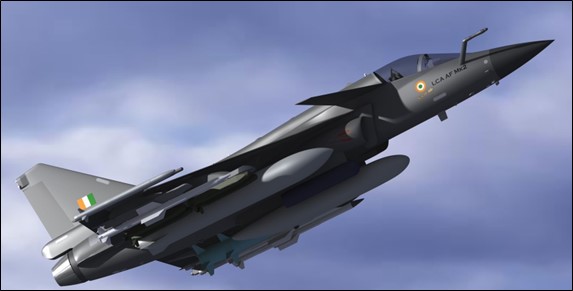
FIGHTING THE DRAGON: INDIA’S BORDER INFRASTRUCTURE WAR WITH CHINA

Everyone wants to climb and live on top of a mountain.
But your climb and happiness on the top depends on your preparation.
-General Ved Prakash Malik,
Former Chief of Army Staff of the Indian Army
The longstanding border dispute between India and China is not merely a geopolitical conflict but a pivotal challenge with far-reaching implications for regional stability and security. India’s response to China’s assertive infrastructure development along the Line of Actual Control (LAC) has become central to its national security strategy. In recent years, India has significantly upgraded its border infrastructure to bolster territorial integrity and counterbalance Chinese ambitions. This includes improving road networks, constructing strategic tunnels, and enhancing air infrastructure. These developments aim not only to meet military needs but also to foster regional development.
Simultaneously, China has also expanded its infrastructure along the LAC, intensifying tensions and prompting military standoffs. The strategic importance of these developments is underscored by their role in shaping the ongoing territorial disputes and broader geopolitical dynamics in the region. As both nations continue to strengthen their positions, the LAC remains a focal point of competition, necessitating ongoing infrastructure enhancements to maintain security and deter conflict.
Road Infrastructure Expansion
India has embarked on an extensive road-building campaign near the LAC. These roads are pivotal for improving connectivity and logistics, allowing rapid mobilisation of troops and equipment. Key projects include the black-topped road on the north bank of Pangong Tso towards Finger 4 and the Sela Tunnel Road project, which will be the world’s longest bi-lane tunnel above 13,000 feet.
The Border Roads Organisation (BRO) has seen a significant rise in its capital budget over recent years. In the fiscal year 2023-24, the budget increased to ₹5,000 crore, marking a 43% rise from the ₹3,500 crore allocated in 2022-23. For 2024-25, the budget saw a substantial increment, reaching ₹6,500 crore.
The BRO has executed 90 infrastructure projects totaling Rs 2,941 crore across 11 states and Union Territories to address the border infrastructure gap with China. These include 36 projects in Arunachal Pradesh, 26 in Ladakh, and 11 in Jammu and Kashmir. This follows 103 projects completed in 2022 (Rs 2,900 crore) and 102 in 2021 (over Rs 2,200 crore).
In the past three years, the BRO has completed 330 projects costing ₹8,737 crore, significantly enhancing the strategic mobility of the Indian armed forces along the LAC.
The development of these roads is crucial for strategic access and operational readiness. For instance, the 130 km Sasoma-Saser La-Brangsa-Gapshan-Daulat Beg Oldi (DBO) Road in Eastern Ladakh provides an alternative route to India’s northernmost military base. Additionally, the 62,214 km of roads, 1,005 bridges, seven tunnels and 21 airfields constructed by the BRO since its inception highlight India’s commitment to infrastructure enhancement along its borders. Despite the progress, challenges such as difficult terrain, weather conditions, and remote locations continue to impede construction efforts. The BRO is set to begin construction on the 4.10-km-long Shinkun La Tunnel, which, upon completion, will be the world’s highest tunnel at an elevation of 15,800 ft, surpassing the 15,590 ft Mila Tunnel in China. India is also progressing on a 298-km all-weather road from Manali to Western Ladakh and Zanskar, with 65 percent of the construction complete and expected to open by 2026.
Air Infrastructure Developments
In contemporary military strategy, the development of air power-related infrastructure is essential for ensuring defence capabilities and maintaining deterrence in strategically significant regions. India’s air infrastructure upgrades near the LAC have been substantial, particularly after key incidents like Doklam and Galwan. These upgrades leverage India’s advantageous topography to maintain a strategic edge in the air domain. The construction of a second runway at the Leh airbase and upgrades to forward airbases like Daulat Beg Oldi and Fukche are notable developments. India is expected to complete a 2.7-km runway at the Nyoma airbase in Ladakh by October 2024. This project, noted as one of the most critical near the disputed border with China, will significantly enhance India’s border infrastructure capabilities, according to BRO chief Lieutenant General Raghu Srinivasan.
These enhancements allow for better support of air operations and rapid deployment capabilities. India has also focused on extending its airfields to accommodate advanced fighter jets, UAVs, and reconnaissance aircraft. However, China’s parallel development of airfields and deployment of additional fighters and drones presents a competitive challenge. China’s airfields, such as Kashgar, Hotan, Ngari Gunsa, and others, enhance the PLA’s (People’s Liberation Army) ability to project air power along the LAC.
Rail Connectivity and Tunnels
Rail infrastructure complements road and air networks, offering efficiency that is vital to military logistics. But rail connectivity remains a relatively underdeveloped aspect of India’s infrastructure along the LAC compared to China. However, plans are underway to improve rail links to bolster logistical capabilities. In addition to rail improvements, India has focused on constructing strategic tunnels to enhance all-weather connectivity and reduce transit times.
Key tunnel projects include the Sela Tunnel in Arunachal Pradesh and the Shinkun La tunnel in Ladakh. The Shinkun La tunnel holds significant strategic importance for the military due to security considerations vis-à-vis threats from China and Pakistan. Its enhanced security profile surpasses that of the Srinagar-Drass-Kaksar-Kargil highway near the Line of Control (LOC) and the Manali Upshi-Leh highway near the Line of Actual Control (LAC). The Sela Tunnel, in particular, provides all-weather access to the Tawang region, crucial for military logistics and rapid troop deployment. These tunnels mitigate the effects of harsh weather and improve the mobility of troops and equipment.
Vibrant Villages Programme
India’s Vibrant Villages Programme aims to comprehensively develop border villages to improve the quality of life for residents and enhance regional stability. This initiative involves constructing roads, bridges, and essential infrastructure in remote border areas, fostering economic development, and strengthening local communities.
The programme’s focus on providing amenities and infrastructure in these villages also has strategic implications. By improving living conditions and connectivity, India can reinforce its presence in border regions, reducing the incentive for out-migration and strengthening national security.
China’s Infrastructure Build-Up
Despite India’s advancements, China continues to expand its infrastructure along the LAC. Over the past four years, China has constructed roads, bridges, and tunnels to enhance last-mile connectivity to its forward positions. The completion of a road from Samzungling to the Galwan Valley exemplifies China’s efforts to shorten troop mobilization routes.
China’s infrastructure development includes constructing new bunkers, camps, underground shelters, artillery positions, radar sites, and ammunition dumps. The PLA has also improved its air combat capabilities by deploying additional fighters, drones and air defence systems. China’s dual use ‘Xiaokang’ border villages further reinforce its positions and territorial claims.
Military and Logistical Support
India has also taken steps to improve living conditions and logistical support for its troops deployed along the LAC. Upgraded living facilities, including modern habitats with water, electricity, and heating, have been established in regions like Eastern Ladakh. The introduction of solar-heated, insulated Ladakhi shelters and the procurement of high-altitude winter clothing highlight India’s commitment to troop welfare.
Additionally, India has commissioned specialized insulated bunkers capable of withstanding extreme temperatures, ensuring that troops remain operational even in harsh winter conditions. These bunkers are constructed to house at least 120 troops. These measures are crucial for maintaining a robust military presence in the region and ensuring that troops are well-prepared for extended deployments.
Comparative Analysis: India vs. China
In comparing the infrastructure developments of India and China along the LAC, several key points emerge. China maintains a lead in terms of the scale and rapidity of its infrastructure build-up. China’s extensive road networks, airfields, and dual-use villages allow for swift mobilisation and logistical support for its forces.
However, India’s strategic tunnel projects, airfield upgrades, and road networks provide significant enhancements to its border infrastructure. India’s efforts to match China’s capabilities are evident in its rapid infrastructure development and military deployments. While China retains a numerical advantage in terms of infrastructure, India’s focus on quality and strategic positioning provides a counterbalance.
Conclusion
India’s infrastructure development along the LAC reflects a strategic shift towards enhancing military capabilities and regional development. The expansion of road networks, air infrastructure, and strategic tunnels underscores India’s commitment to improving connectivity and logistical support in border areas. Despite facing challenges such as difficult terrain and harsh weather, India has made significant strides in infrastructure development, providing a counterbalance to China’s extensive build-up along the LAC.
China’s relentless infrastructure expansion poses ongoing challenges for India, necessitating continuous efforts to match and counter China’s capabilities. However, India’s comprehensive approach, including the Vibrant Villages Programme and the focus on improving living conditions for troops, highlights a balanced strategy that addresses both security and developmental needs. As India continues to strengthen its border infrastructure, the strategic dynamics along the LAC will remain a critical aspect of its defence and regional development policies.
Disclaimer
The opinions expressed in this article are the author’s own and do not reflect the views of Chanakya Forum. All information provided in this article including timeliness, completeness, accuracy, suitability or validity of information referenced therein, is the sole responsibility of the author. www.chanakyaforum.com does not assume any responsibility for the same.
Chanakya Forum is now on . Click here to join our channel (@ChanakyaForum) and stay updated with the latest headlines and articles.
Important
We work round the clock to bring you the finest articles and updates from around the world. There is a team that works tirelessly to ensure that you have a seamless reading experience. But all this costs money. Please support us so that we keep doing what we do best. Happy Reading
Support Us















POST COMMENTS (0)